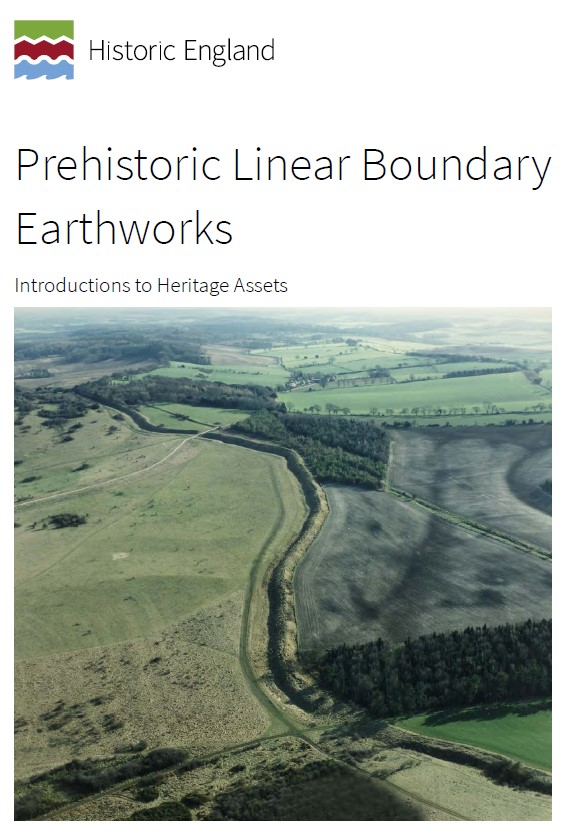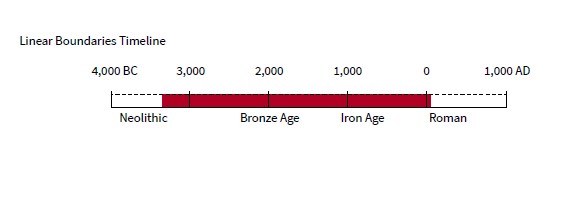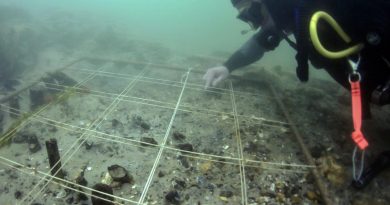Rethinking Ancient Boundaries: The Vallum and Offa’s Dyke”
Contents
- 1 Introduction
- 2 The Roman Canals of Cumbria: A Forgotten Legacy
- 2.0.1 T.C. Bell’s Groundbreaking Surveys
- 2.0.2 Gordon Emery’s Research and Publications
- 2.0.3 The Vallum: More Than a Defensive Structure
- 2.0.4 Connecting Rivers: The Eden and Petteril Canals
- 2.0.5 The High Street Roman Road and Its Canals
- 2.0.6 Challenges and Modern Implications
- 2.0.7 Preserving and Promoting Roman Engineering Heritage
- 2.0.8 For further reading and detailed maps of these canals, you can access Gordon Emery’s publications here and delve into Bell’s extensive surveys at this link.
- 3 2025 Update
- 3.0.1 Historic England Confirms the Prehistoric Origins of Britain’s Linear Earthworks
- 3.0.1.1 Why Offa’s and Wansdyke Are Not Saxon Ditches
- 3.0.1.2 1. Historic England’s Own Words
- 3.0.1.3 2. Confusion by Reuse
- 3.0.1.4 3. Historic England Admits Mis-Dating Risks
- 3.0.1.5 4. Functional Variety, Not Fortification
- 3.0.1.6 5. The Official Timeline
- 3.0.1.7 6. What This Means
- 3.0.1.8 7. A New Understanding
- 3.0.1.9 Conclusion
- 3.0.1 Historic England Confirms the Prehistoric Origins of Britain’s Linear Earthworks
- 4 Further Reading
- 5 Other Blogs
Introduction
History brims with unsung heroes, those outsiders whose contributions leap from the shadows, not through the traditional channels of academic rigour but via the sheer force of innovative thought. These individuals, often sidelined by mainstream science for lacking formal credentials, have propelled progress with their unorthodox insights. In his eloquent reflections on science and humanity, Jacob Bronowski would have appreciated these figures ‘courage to challenge established disciplines’ dogmas and orthodoxy. Through their unconventional viewpoints, they invite us to step out of the “propaganda box” of discipline norms and reconsider the broader knowledge landscape with fresh eyes. (Rethinking Ancient Boundaries)
T.C. Bell, an exemplar of this breed of intellectual mavericks, has carved a niche for himself by daring to interrogate and dissect the established norms that often go unchallenged within the walls of academia. His work serves as a testament to the idea that significant advancements and profound understanding often come from the periphery, from those who are not bound by the echo chambers of conventional scholarship. By stepping outside the traditional frameworks and employing a unique blend of curiosity and critical thinking, Bell has contributed to a broader, more inclusive dialogue that challenges the status quo and enriches our collective pursuit of knowledge. His endeavours remind us that the pursuit of truth is a democratic exercise, open to all who are willing to question, to explore, and to think deeply about the world around them.
The convergence of conclusions between my research into The Vallum and Offa’s Dyke and that of T.C. Bell—despite our distinct investigative paths—highlights a compelling case for re-evaluating the traditional narratives surrounding these iconic historical structures. This parallelism underscores an essential point: valuable insights often arise from diverse methodologies and perspectives, challenging the prevailing historical accounts upheld by mainstream scholarship. It suggests that our understanding of such monuments is incomplete and potentially biased by the limitations of conventional approaches. The fact that two researchers can arrive at similar conclusions independently and from entirely different angles calls for a broader, more interdisciplinary approach to historical inquiry. This should include voices and traditionally overlooked or marginalised hypotheses, prompting a necessary and overdue reassessment of what we know about these ancient landmarks. (Rethinking Ancient Boundaries)
The Roman Canals of Cumbria: A Forgotten Legacy
The Roman engineering feats across Cumbria, particularly their use of canals for transportation, represent an underappreciated aspect of ancient infrastructure. T.C. Bell, a notable engineer and dowser, was among the first to suggest that what is now referred to as the Vallum, along with other dykes, were originally Roman canals. His extensive work and surveys provide compelling evidence supporting this theory. This blog delves into Bell’s findings, Gordon Emery’s contributions, and the broader implications of these Roman canals.


T.C. Bell’s Groundbreaking Surveys
T.C. Bell conducted comprehensive surveys that revealed the presence of Roman canals flanking Hadrian’s Wall and the Antonine Wall. Bell’s observations noted that these canals, often confused with mere dykes, were ingeniously constructed with aqueducts that ensured a continuous flow of oxygenated water, preventing stagnation and facilitating transportation. His findings were later validated by LiDAR imaging, confirming the accuracy and foresight of his methods. As Bell noted, “The Roman transportation highways for heavy and bulky goods were the canalised rivers, burns, and lakes, not their roads”(HIGH STREET ROMAN ROAD).
Gordon Emery’s Research and Publications
An avid historian and author, Gordon Emery spent significant time analysing Bell’s work. His dedication is evident in his publications, such as “Curious Cumbria,” where he further explores these Roman canals’ historical and practical aspects. Emery’s research included examining ancient documents, conducting fieldwork, and utilising modern technology to map these ancient waterways. Emery highlighted Bell’s contribution in his own words: “Bell’s surveys, particularly his work on the Vallum, revealed the true nature of these structures as part of an integrated canal system”(HIGH STREET ROMAN ROAD).

The Vallum: More Than a Defensive Structure
The Vallum, traditionally considered a defensive structure adjacent to Hadrian’s Wall, was posited by Bell as a canal for transporting stone and other materials necessary to construct the wall. This theory is supported by the presence of flanking aqueducts and the geographical alignment of the Vallum with known Roman transportation routes. Emery’s work corroborates this, highlighting that the Vallum’s design is consistent with Roman canal engineering principles. Bell wrote, “The canals which supplied Hadrian’s Wall ran inside the vallum, servicing the many metallic and coal exploitation sites along the Wall”(HIGH STREET ROMAN ROAD).
Connecting Rivers: The Eden and Petteril Canals
Bell’s surveys also uncovered a network of canals linking the Rivers Eden and Petteril, which are crucial for transportation across the region. These canals, featuring sophisticated lock systems and aqueducts, were designed to navigate the challenging Cumbrian terrain. Such infrastructure allowed for the seamless movement of goods, particularly during winter when river levels fluctuated dramatically. “The Rivers Lowther, Eamont, Petteril, Calder, Lyvenett, Leith, and the 70-mile long Eden all formed the highways, converted for navigational purposes by the Romans”(HIGH STREET ROMAN ROAD).
The High Street Roman Road and Its Canals
The High Street Roman Road, another significant route in Cumbria, was flanked by canals that enhanced its utility for transportation. These canals ran alongside double carriageways and were integral to the road’s function, enabling the transport of heavy goods, ore, and other materials. Bell’s work highlights the road’s strategic importance, connecting major Roman towns and facilitating military and commercial activities. “High Street’s double roads served as a major north-south route, with numerous ore exploitation sites and military installations along its path”(HIGH STREET ROMAN ROAD).

Challenges and Modern Implications
Despite the overwhelming evidence, many of Bell’s theories were initially met with scepticism. However, the validation of his work through modern technology has shed new light on the Roman use of canals in Britain. These findings have important implications for modern infrastructure planning, particularly in understanding historical land use and addressing contemporary issues like flooding and subsidence caused by the disruption of ancient waterways. Bell emphasised, “Ignoring the presence of Roman canals and aqueducts has led to subsidence in houses and floods on roads”(HIGH STREET ROMAN ROAD).
Preserving and Promoting Roman Engineering Heritage
The work of T.C. Bell and Gordon Emery underscore the importance of preserving and promoting our understanding of Roman engineering feats. These canals represent a remarkable achievement of ancient engineering and offer valuable insights into sustainable infrastructure practices. As we continue to uncover and validate these historical networks, it is crucial to integrate this knowledge into our modern planning and conservation efforts. Bell’s surveys concluded, “Penrith and the surrounding areas were vital hubs in the Roman transportation network, demonstrating a sophisticated integration of roads, canals, and industrial sites”(HIGH STREET ROMAN ROAD).
For further reading and detailed maps of these canals, you can access Gordon Emery’s publications here and delve into Bell’s extensive surveys at this link.
(Rethinking Ancient Boundaries)
2025 Update
Historic England Confirms the Prehistoric Origins of Britain’s Linear Earthworks
Why Offa’s and Wansdyke Are Not Saxon Ditches
By The Prehistoric AI Team

For over a century, archaeologists have confidently told the public that Britain’s great linear earthworks—Offa’s Dyke, Wansdyke, and their lesser-known cousins—were “Saxon defensive boundaries.” Yet even the government’s own heritage body now quietly admits otherwise.
In its official publication HEAG 219: Prehistoric Linear Boundary Earthworks (Historic England, 2018), the evidence is laid out in black and white: these monumental ditches and banks are not the product of medieval kingdoms but of prehistoric engineering, reaching back thousands of years before Offa or Rome.
1. Historic England’s Own Words
“From the Neolithic period onwards in the British Isles, natural boundaries such as watercourses and escarpments have been supplemented by artificial boundaries, often formed by a ditch and bank.”
(HEAG 219, p.2)
That sentence alone demolishes the Saxon myth. These “artificial boundaries” appear from around 3600 BCE, the same period as Britain’s causewayed enclosures and early field systems.
“The earliest conventional linear earthwork so far confirmed, dating to around 3600 BC, follows the crest of the western escarpment of Hambleton Hill, Dorset, for perhaps as much as 3 km.”
(HEAG 219, p.7)
In other words, the engineering tradition behind Offa’s and Wansdyke was already flourishing five thousand years earlier than the supposed Saxon period.
2. Confusion by Reuse
“Some of these early boundaries… continued to structure the social and economic landscape through the Iron Age and into the Roman period. Indeed, some have seen continuous use, or repeated re-use, from prehistory to the present day.”
(HEAG 219, p.7)
This statement is key.
What later archaeologists labelled as “Roman” or “Saxon” were often prehistoric earthworks re-used by later peoples. Defensive adaptations may have been made, but the physical structures already existed—centuries or millennia earlier.
Langdon’s LiDAR analysis of Wansdyke and Offa’s Dyke shows this perfectly: continuous, water-connected segments, truncated by rivers and palaeochannels, betray origins in a hydrological engineering system, not a medieval frontier.
3. Historic England Admits Mis-Dating Risks
“Prehistoric examples can be confused with medieval or later ones… Their form is not often diagnostic.”
(HEAG 219, p.7)
This rare confession from within Historic England supports Langdon’s long-standing criticism of archaeological dating methods. When earthworks lack carbonised deposits, dating often depends on surface finds—antler picks, pottery sherds, or even stray Roman coins—leading to circular logic.
As Prehistoric Dykes (Canals) argued, this flawed reasoning has turned prehistoric infrastructure into “Saxon defences” by default.
4. Functional Variety, Not Fortification
“It is often difficult to determine whether a particular boundary was used for defence, for stock-herding, or purely as a symbol; in truth, most boundaries probably served all of these functions to varying degrees.”
(HEAG 219, p.2)
The report concedes that no single explanation fits. The traditional defensive model collapses under scrutiny: there are no battle remains, no arrowheads, and no consistent rampart orientations.
This aligns with Langdon’s hydrological interpretation—seeing these earthworks as water management and navigation canals formed when Britain’s post-glacial landscape still retained a higher water table. Their engineering precision makes sense when viewed as prehistoric canalisation, not Saxon militarism.
5. The Official Timeline
Historic England’s own chart places linear boundaries firmly in the Neolithic and Bronze Age, with only reuse continuing into later eras:

Linear Boundaries Timeline (HEAG 219, p.
4000 BC – Neolithic beginnings
1500 BC – Bronze Age expansion
0 AD – Roman reuse
The Saxon period doesn’t even feature.
6. What This Means
The implications are profound. Historic England has, perhaps unintentionally, validated the central premise of the Prehistoric Dyke Hypothesis:
Britain’s linear earthworks are prehistoric hydraulic and boundary systems, later adopted but not created by historical kingdoms.
The narrative of “Saxon kings digging 100-mile ditches by hand” finally collapses under the weight of its own impossibility—and the evidence from both LiDAR and the nation’s own heritage authority.
7. A New Understanding
The HEAG 219 publication is cautious in tone, but its data speaks volumes. The earliest linear boundaries coincide with the rise of complex water management systems, just as Langdon’s LiDAR work shows canal-like forms and river terminations.
It is time to update the textbooks:
Wansdyke, Offa’s Dyke, Car Dyke and their lesser cousins are prehistoric canals—part of a sophisticated hydrological network that once crisscrossed a flooded Britain.
Conclusion
Even Historic England now concedes that Britain’s linear earthworks belong to prehistory, not the Dark Ages.
By accepting this evidence, we move beyond folklore and into a genuinely scientific framework—one where landscape engineering, water management, and maritime trade define our ancestors’ genius.
Sources:
- Historic England (2018) Prehistoric Linear Boundary Earthworks: Introductions to Heritage Assets (HEAG 219).
- Langdon, R.J. (2022) Prehistoric Dykes (Canals) – Wansdyke v1.2.
- Langdon, R.J. (2024) Twigs, Charcoal, and the Death of the Saxon Dyke Myth.
Further Reading
For information about British Prehistory, visit www.prehistoric-britain.co.uk for the most extensive archaeology blogs and investigations collection, including modern LiDAR reports. This site also includes extracts and articles from the Robert John Langdon Trilogy about Britain in the Prehistoric period, including titles such as The Stonehenge Enigma, Dawn of the Lost Civilisation and the ultimate proof of Post Glacial Flooding and the landscape we see today.
Robert John Langdon has also created a YouTube web channel with over 100 investigations and video documentaries to support his classic trilogy (Prehistoric Britain). He has also released a collection of strange coincidences that he calls ‘13 Things that Don’t Make Sense in History’ and his recent discovery of a lost Stone Avenue at Avebury in Wiltshire called ‘Silbury Avenue – the Lost Stone Avenue’.
Langdon has also produced a series of ‘shorts’, which are extracts from his main body of books:
(Professor Bonkers and the mad, mad World of Archaeology)
Other Blogs
1
a
- AI now Supports – Homo Superior
- AI now supports my Post-Glacial Flooding Hypothesis
- Alexander the Great sailed into India – where no rivers exist today
- Ancient Prehistoric Canals – The Vallum
- Ancient Secrets of Althorp – debunked
- Antler Picks built Ancient Monuments – yet there is no real evidence
- Antonine Wall – Prehistoric Canals (Dykes)
- Archaeological ‘pulp fiction’ – has archaeology turned from science?
- Archaeological Pseudoscience
- Archaeology in the Post-Truth Era
- Archaeology: A Bad Science?
- Archaeology: A Harbour for Fantasists?
- Archaeology: Fact or Fiction?
- Archaeology: The Flaws of Peer Review
- Archaeology’s Bayesian Mistake: Stop Averaging the Past
- Are Raised Beaches Archaeological Pseudoscience?
- Atlantis Found: The Mathematical Proof That Plato’s Lost City Was Doggerland
- ATLANTIS: Discovery with Dan Snow Debunked
- Avebury Ditch – Avebury Phase 2
- Avebury Post-Glacial Flooding
- Avebury through time
- Avebury’s great mystery revealed
- Avebury’s Lost Stone Avenue – Flipbook
b
- Battlesbury Hill – Wiltshire
- Beyond Stone and Bone: Rethinking the Megalithic Architects of Northern Europe
- BGS Prehistoric River Map
- Blackhenge: Debunking the Media misinterpretation of the Stonehenge Builders
- Brain capacity (Cro-Magnon Man)
- Brain capacity (Cro-Magnon Man)
- Britain’s First Road – Stonehenge Avenue
- Britain’s Giant Prehistoric Waterways
- British Roman Ports miles away from the coast
c
- Caerfai Promontory Fort – Archaeological Nonsense
- Car Dyke – ABC News PodCast
- Car Dyke – North Section
- CASE STUDY – An Inconvenient TRUTH (Craig Rhos Y Felin)
- Case Study – River Avon
- Case Study – Woodhenge Reconstruction
- Chapter 2 – Craig Rhos-Y-Felin Debunked
- Chapter 2 – Stonehenge Phase I
- Chapter 2 – Variation of the Species
- Chapter 3 – Post Glacial Sea Levels
- Chapter 3 – Stonehenge Phase II
- Chapter 7 – Britain’s Post-Glacial Flooding
- Cissbury Ring through time
- Cro-Magnons – An Explainer
d
- Darwin’s Children – Flipbook
- Darwin’s Children – The Cro-Magnons
- Dawn of the Lost Civilisation – Flipbook
- Dawn of the Lost Civilisation – Introduction
- Digging for Britain – Cerne Abbas 1 of 2
- Digging for Britain Debunked – Cerne Abbas 2
- Digging Up Britain’s Past – Debunked
- DLC Chapter 1 – The Ascent of Man
- Durrington Walls – Woodhenge through time
- Dyke Construction – Hydrology 101
- Dykes Ditches and Earthworks
- DYKES of Britain
e
f
g
h
- Hadrian’s Wall – Military Way Hoax
- Hadrian’s Wall – the Stanegate Hoax
- Hadrian’s Wall LiDAR investigation
- Hambledon Hill – NOT an ‘Iron Age Fort’
- Hayling Island Lidar Maps
- Hidden Sources of Ancient Dykes: Tracing Underground Groundwater Fractals
- Historic River Avon
- Hollingsbury Camp Brighton
- Hollows, Sunken Lanes and Palaeochannels
- Homo Superior – Flipbook
- Homo Superior – History’s Giants
- How Lidar will change Archaeology
i
l
m
- Maiden Castle through time
- Mathematics Meets Archaeology: Discovering the Mesolithic Origins of Car Dyke
- Mesolithic River Avon
- Mesolithic Stonehenge
- Minerals found in Prehistoric and Roman Quarries
- Mining in the Prehistoric to Roman Period
- Mount Caburn through time
- Mysteries of the Oldest Boatyard Uncovered
- Mythological Dragons – a non-existent animal that is shared by the World.
o
- Offa’s Dyke Flipbook
- Old Sarum Lidar Map
- Old Sarum Through Time…………….
- On Sunken Lands of the North Sea – Lived the World’s Greatest Civilisation.
- OSL Chronicles: Questioning Time in the Geological Tale of the Avon Valley
- Oswestry LiDAR Survey
- Oswestry through time
- Oysters in Archaeology: Nature’s Ancient Water Filters?
p
- Pillow Mounds: A Bronze Age Legacy of Cremation?
- Post Glacial Flooding – Flipbook
- Prehistoric Burial Practices of Britain
- Prehistoric Canals – Wansdyke
- Prehistoric Canals – Wansdyke
- Prehistoric Canals (Dykes) – Great Chesters Aqueduct (The Vallum Pt. 4)
- Prehistoric Canals (Dykes) – Hadrian’s Wall Vallum (pt 1)
- Prehistoric Canals (Dykes) – Offa’s Dyke (Chepstow)
- Prehistoric Canals (Dykes) – Offa’s Dyke (LiDAR Survey)
- Prehistoric Canals (Dykes) – Offa’s Dyke Survey (End of Section A)
- Prehistoric Canals (Dykes) – Wansdyke (4)
- Prehistoric Canals Wansdyke 2
- Professor Bonkers and the mad, mad World of Archaeology
r
- Rebirth in Stone: Decrypting the Winter Solstice Legacy of Stonehenge
- Rediscovering the Winter Solstice: The Original Winter Festival
- Rethinking Ancient Boundaries: The Vallum and Offa’s Dyke”
- Rethinking Ogham: Could Ireland’s Oldest Script Have Begun as a Tally System?
- Rethinking The Past: Mathematical Proof of Langdon’s Post-Glacial Flooding Hypothesis
- Revolutionising History: Car Dyke Unveiled as Prehistoric & the Launch of FusionBook 360
- Rising Evidence, Falling Rivers: The Real Story of Europe’s First Farmers
- Rivers of the Past Were Higher: A Fresh Perspective on Prehistoric Hydrology
s
- Sea Level Changes
- Section A – NY26SW
- Section B – NY25NE & NY26SE
- Section C – NY35NW
- Section D – NY35NE
- Section E – NY46SW & NY45NW
- Section F – NY46SE & NY45NE
- Section G – NY56SW
- Section H – NY56NE & NY56SE
- Section I – NY66NW
- Section J – NY66NE
- Section K – NY76NW
- Section L – NY76NE
- Section M – NY87SW & NY86NW
- Section N – NY87SE
- Section O – NY97SW & NY96NW
- Section P – NY96NE
- Section Q – NZ06NW
- Section R – NZ06NE
- Section S – NZ16NW
- Section T – NZ16NE
- Section U – NZ26NW & NZ26SW
- Section V – NZ26NE & NZ26SE
- Silbury Avenue – Avebury’s First Stone Avenue
- Silbury Hill
- Silbury Hill / Sanctuary – Avebury Phase 3
- Somerset Plain – Signs of Post-Glacial Flooding
- South Cadbury Castle – Camelot
- Statonbury Camp near Bath – an example of West Wansdyke
- Stone me – the druids are looking the wrong way on Solstice day
- Stone Money – Credit System
- Stone Transportation and Dumb Censorship
- Stonehenge – Monument to the Dead
- Stonehenge Hoax – Dating the Monument
- Stonehenge Hoax – Round Monument?
- Stonehenge Hoax – Summer Solstice
- Stonehenge LiDAR tour
- Stonehenge Phase 1 — Britain’s First Monument
- Stonehenge Phase I (The Stonehenge Landscape)
- Stonehenge Solved – Pythagorean maths put to use 4,000 years before he was born
- Stonehenge Stone Transportation
- Stonehenge Through Time
- Stonehenge, Doggerland and Atlantis connection
- Stonehenge: Discovery with Dan Snow Debunked
- Stonehenge: The Worlds First Computer
- Stonehenge’s The Lost Circle Revealed – DEBUNKED
t
- Ten Reasons Why Car Dyke Blows Britain’s Earthwork Myths Out of the Water
- Ten Things You Didn’t Know About Britain’s Prehistoric Flooded Past
- Ten thousand year old boats found on Northern Europe’s Hillsides
- Ten thousand-year-old boats found on Northern Europe’s Hillsides
- The “Hunter-Gatherer” Myth: Why It’s Time to Bury This Outdated Term
- The Ancient Mariners – Flipbook
- The Ancient Mariners – Prehistoric seafarers of the Mesolithic
- The Beringian Migration Myth: Why the Peopling of the Americas by Foot is Mathematically and Logistically Impossible
- The Bluestone Enigma
- The Cro-Magnon Cover-Up: How DNA and PR Labels Erased Our Real Ancestry
- The Dolmen and Long Barrow Connection
- The Durrington Walls Hoax – it’s not a henge?
- The First European Smelted Bronzes
- The Fury of the Past: Natural Disasters in Historical and Prehistoric Britain
- The Giant’s Graves of Cumbria
- The Giants of Prehistory: Cro-Magnon and the Ancient Monuments
- The Great Antler Pick Hoax
- The Great Chichester Hoax – A Bridge too far?
- The Great Dorchester Aqueduct Hoax
- The Great Farming Hoax – (Einkorn Wheat)
- The Great Farming Migration Hoax
- The Great Hadrian’s Wall Hoax
- The Great Iron Age Hill Fort Hoax
- The Great Offa’s Dyke Hoax
- The Great Prehistoric Migration Hoax
- The Great Stone Transportation Hoax
- The Great Stonehenge Hoax
- The Great Wansdyke Hoax
- The Henge and River Relationship
- The Logistical Impossibility of Defending Maiden Castle
- The Long Barrow Mystery
- The Long Barrow Mystery: Unraveling Ancient Connections
- The Lost Island of Avalon – revealed
- The Maiden Way Hoax – A Closer Look at an Ancient Road’s Hidden History
- The Maths – LGM total ice volume
- The Mystery of Pillow Mounds: Are They Really Medieval Rabbit Warrens?
- The Old Sarum Hoax
- The Oldest Boat Yard in the World found in Wales
- The Perils of Paradigm Shifts: Why Unconventional Hypotheses Get Branded as Pseudoscience
- The Post-Glacial Flooding Hypothesis – Flipbook
- The Post-Glacial Flooding Theory
- The Problem with Hadrian’s Vallum
- The Rise of the Cro-Magnon (Homo Superior)
- The Roman Military Way Hoax
- The Silbury Hill Lighthouse?
- The Stonehenge Avenue
- The Stonehenge Avenue
- The Stonehenge Code: Unveiling its 10,000-Year-Old Secret
- The Stonehenge Enigma – Flipbook
- The Stonehenge Enigma: What Lies Beneath? – Debunked
- The Stonehenge Hoax – Bluestone Quarry Site
- The Stonehenge Hoax – Flipbook
- The Stonehenge Hoax – Moving the Bluestones
- The Stonehenge Hoax – Periglacial Stripes
- The Stonehenge Hoax – Station Stones
- The Stonehenge Hoax – Stonehenge’s Location
- The Stonehenge Hoax – The Ditch
- The Stonehenge Hoax – The Slaughter Stone
- The Stonehenge Hoax – The Stonehenge Layer
- The Stonehenge Hoax – Totem Poles
- The Stonehenge Hoax – Woodhenge
- The Stonehenge Hospital
- The Subtropical Britain Hoax
- The Troy, Hyperborea and Atlantis Connection
- The Vallum @ Hadrian’s Wall – it’s Prehistoric!
- The Vallum at Hadrian’s Wall (Summary)
- The Woodhenge Hoax
- Three Dykes – Kidland Forest
- Top Ten misidentified Fire Beacons in British History
- Troy Debunked
- TSE – DVD Barrows
- TSE DVD – An Inconvenient Truth
- TSE DVD – Antler Picks
- TSE DVD – Avebury
- TSE DVD – Durrington Walls & Woodhenge
- TSE DVD – Dykes
- TSE DVD – Epilogue
- TSE DVD – Stonehenge Phase I
- TSE DVD – Stonehenge Phase II
- TSE DVD – The Post-Glacial Hypothesis
- TSE DVD Introduction
- TSE DVD Old Sarum
- Twigs, Charcoal, and the Death of the Saxon Dyke Myth
w
- Wansdyke – Short Film
- Wansdyke East – Prehistoric Canals
- Wansdyke Flipbook
- Wansdyke LiDAR Flyover
- Wansdyke: A British Frontier Wall – ‘Debunked’
- Was Columbus the first European to reach America?
- White Sheet Camp
- Why a Simple Fence Beats a Massive Dyke (and What That Means for History)
- Windmill Hill – Avebury Phase 1
- Winter Solstice – Science, Propaganda and Indoctrination
- Woodhenge – the World’s First Lighthouse?
(Rethinking Ancient Boundaries)





Pingback: 2024 Blog Post Review - Prehistoric Britain